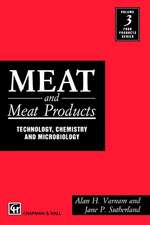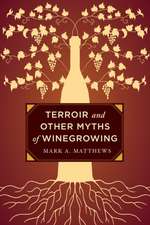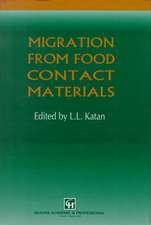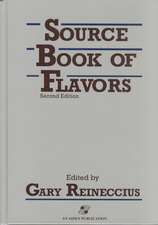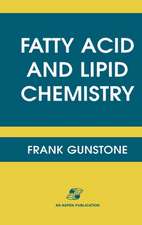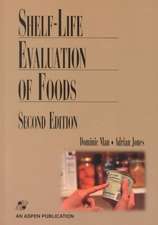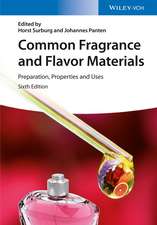The Technology of Extrusion Cooking
Editat de N.D. Frameen Limba Engleză Paperback – 17 oct 2012
| Toate formatele și edițiile | Preț | Express |
|---|---|---|
| Paperback (1) | 469.74 lei 43-57 zile | |
| Springer Us – 17 oct 2012 | 469.74 lei 43-57 zile | |
| Hardback (1) | 1384.88 lei 43-57 zile | |
| Springer Us – 30 mar 1993 | 1384.88 lei 43-57 zile |
Preț: 469.74 lei
Preț vechi: 552.64 lei
-15% Nou
Puncte Express: 705
Preț estimativ în valută:
89.88€ • 94.10$ • 74.37£
89.88€ • 94.10$ • 74.37£
Carte tipărită la comandă
Livrare economică 07-21 aprilie
Preluare comenzi: 021 569.72.76
Specificații
ISBN-13: 9781461358916
ISBN-10: 1461358914
Pagini: 268
Ilustrații: XI, 253 p.
Dimensiuni: 155 x 235 x 14 mm
Greutate: 0.38 kg
Ediția:1994
Editura: Springer Us
Colecția Springer
Locul publicării:New York, NY, United States
ISBN-10: 1461358914
Pagini: 268
Ilustrații: XI, 253 p.
Dimensiuni: 155 x 235 x 14 mm
Greutate: 0.38 kg
Ediția:1994
Editura: Springer Us
Colecția Springer
Locul publicării:New York, NY, United States
Public țintă
ResearchCuprins
1 Operational characteristics of the co-rotating twin-screw extruder.- 1.1 Types of extruders.- 1.2 Process characteristics of the t.s.e..- 1.3 Ancillary processes.- 1.4 Raw materials.- 1.5 Practical operation of the t.s.e.—start up, shut down and control.- 1.6 Glossary.- References.- 2 Raw materials for extrusion cooking processes.- 2.1 Introduction.- 2.2 Structure-forming raw materials.- 2.3 Raw materials acting as fillers in the extrudates.- 2.4 Raw materials as plasticisers and lubricants.- 2.5 Raw materials acting as nucleants for gas bubble formation.- 2.6 Raw materials acting as flavours.- References.- 3 Breakfast and cereal extrusion technology.- 3.1 Introduction.- 3.2 What is a breakfast cereal?.- 3.3 A closer look at the products.- 3.4 Breakfast cereal processes.- 3.5 Principles of cooking.- 3.6 Overview of cooking processes.- 3.7 Breakfast cereal processes: traditional and extrusion methods.- 3.8 Conclusion.- References.- 4 Snack food extrusion.- 4.1 Introduction.- 4.2 Ingredients.- 4.3 Equipment review.- 4.4 Direct expanded products.- 4.5 Co-extruded snacks.- 4.6 Indirect expanded products.- 4.7 Die and cutter design.- References.- 5 Petfood and fishfood extrusion.- 5.1 Introduction.- 5.2 Raw material characteristics and selection.- 5.3 Selection of hardware.- 5.4 Processing variables.- 5.5 Final product specifications.- 5.6 Evaluation of operational costs.- 5.7 Conclusion.- References.- 6 Confectionery extrusion.- 6.1 Introduction.- 6.2 Processing.- 6.3 Flavours and other special ingredients for confectionery extrusion.- 6.4 Liquorice.- 6.5 Toffees, caramels and fudges.- 6.6 Boiled sweets.- 6.7 Sugar crust liqueurs.- 6.8 Pressed tablets.- 6.9 Creams, pastes and lozenges.- 6.10 Gums.- 6.11 Jellies.- 6.12 Cocoa and crumb.- 6.13 Chocolate.- 6.14 Reactionchamber products.- 6.15 Aerated confections.- 6.16 Chewing gum.- 6.17 Frozen confectionery.- 6.18 Croutons.- 6.19 Three-dimensional confections.- 6.20 Confections by half products.- 6.21 Other areas.- 6.22 Conclusion.- Acknowledgements.- References.- 7 Extrusion of brewers’ hops.- 7.1 Introduction.- 7.2 Application of extrusion technology to the production of bitterness in beer.- 7.3 Development of extrusion technology in hop processing.- 7.4 Process chemistry—choice of alkaline salt.- 7.5 Composition and quality of extruded hops.- 7.6 Experimental brewing studies with extruded hops.- 7.7 Process development to commercial scale production.- 7.8 Conclusion.- References.

